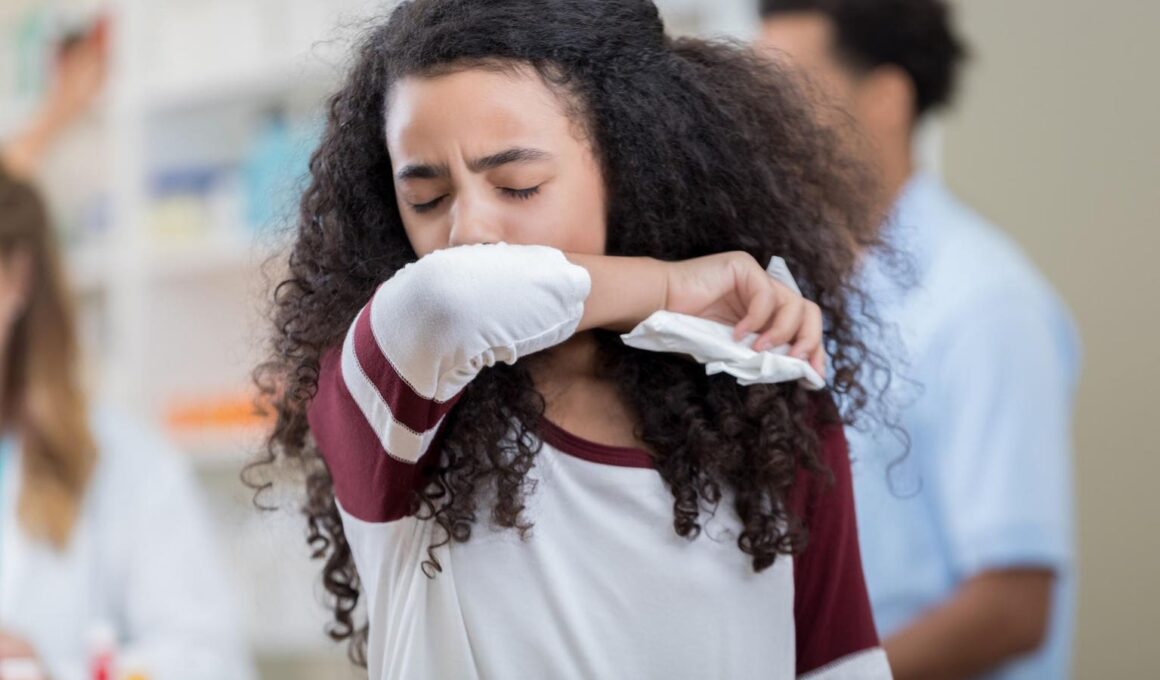Topline
A highly contagious respiratory infection known as parvovirus B19—sometimes called “fifth disease” or “slapped cheek” disease—on the rise in the United States, particularly among young children, the Centers for Disease Control and Prevention warned on Tuesday, signaling a comeback after COVID-19 pandemic precautions slashed cases, and, in turn, immunity against the seasonal virus.
Parvovirus B19 cases are on the rise, the CDC said.
Key Facts
Parvovirus B19 is a common seasonal virus prevalent during late winter, spring and early summer and usually spread by airborne respiratory droplets produced when people talk, breathe, cough and sneeze.
Infections are usually asymptomatic or cause mild, flu-like illness with symptoms like fatigue, headache, muscle aches and fever, with many going on to experience a second stage of illness with symptoms like a characteristic facial rash, often called a “slapped cheek” rash, followed by joint pain and swelling and a general body rash.
Most infections usually go away on their own after a few weeks and there are no specific treatments other than tackling symptoms, though for some people with blood disorders or a weakened immune system the disease can lead to serious complications such as a severe and potentially fatal drop in blood cells (anemia).
For pregnant people, the virus can also spread from mother to fetus and the CDC says there is a 5-10% chance of adverse fetal outcome, including miscarriage, with the risk of this higher during the earlier stages of pregnancy.
The CDC says people are the most contagious during the first few days of symptoms and are unlikely to remain contagious after the rash appears, at which point it is “usually safe to go back to work or school.”
There are no vaccines to prevent parvovirus B19 infection and the CDC advises people to follow general respiratory precautions like covering the mouth and nose when coughing or sneezing, practicing proper handwashing and cleaning frequently-touched surfaces, as well as potentially wearing a mask when around others.
How Common Is Parvovirus B19?
Parvovirus B19 is incredibly common and health officials stress the risk from the virus to the general public is low. Cases are now spiking in places like the U.S. and parts of Europe after having fallen in line with many other respiratory illnesses during the COVID-19 pandemic. Experts believe infection with parvovirus B19 conveys immunity against future infections, which means the reduction in cases during the pandemic has also dampened population-level immunity against the virus, particularly among younger children who may not have had many opportunities to be exposed and are often more likely to catch and spread infectious diseases and more vulnerable to them when infected. The majority of adults in the U.S. show signs of having been exposed to parvovirus B19 at some point in their lives, the CDC said, with 50% of adults having detectable antibodies at age 20 and more than 70% by age 40.
What We Don’t Know
There is “no routine surveillance for parvovirus B19, and it is not a notifiable condition,” the CDC said, meaning it is not possible to know the true scope of parvovirus B19 infections in the U.S. The CDC said it has issued its warning based on reports it has received with data suggesting an uptick in cases, including data from clinical blood specimens and pooled plasma from a commercial laboratory, as well as reports of clusters of B19-related complications among pregnant people and people with sickle cell disease, a blood disorder. Research examining the presence of protective antibodies in the blood, which signal infection, indicate cases have risen most sharply among kids ages five to nine years old. Between 2022 and 2024, the CDC said the rate of antibodies in that cohort has jumped from 15% to 40% as of this June.
Tangent
Parvovirus B19 is sometimes called “Fifth Disease” because it was the fifth disease in a string of typically childhood illnesses characterized by a rash. The other four are measles, rubella, chicken pox and roseola. Measles and rubella were common afflictions of childhood for much of history but cases have drastically reduced with the widespread use of a safe and effective vaccine—often the combined measles, mumps and rubella, or “MMR,” shot—though cases are on the rise in many parts of the world due to lower uptake. Chicken pox, also known as varicella, is also preventable with a vaccine and the CDC recommends two doses during childhood.
Further Reading
Get Forbes Breaking News Text Alerts: We’re launching text message alerts so you’ll always know the biggest stories shaping the day’s headlines. Text “Alerts” to (201) 335-0739 or sign up here.








